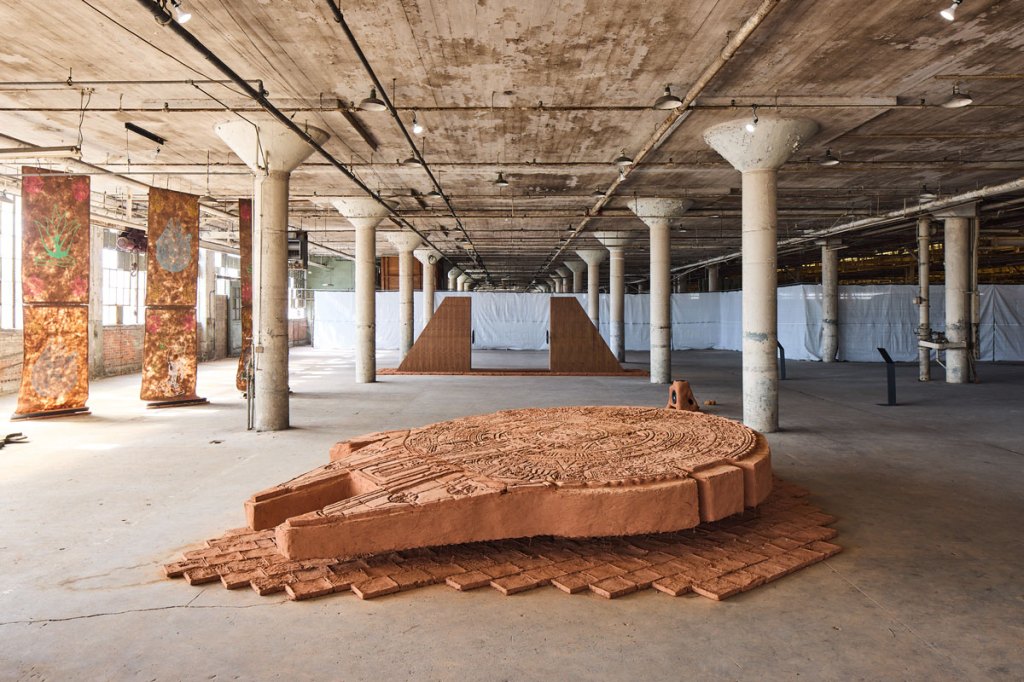Prospect New Orleans, the citywide triennial launched in 2007, will not mount a seventh edition in 2027. Instead, the organization will focus on creating a publication looking at its first 20 years, slated for publication in 2027.
Titled 20 Years of Prospect, the volume will include a mix of oral histories and critical essays about the first six editions of Prospect, as well as include archival imagery from each edition.
Mounting another edition of Prospect in the future is not completely off the table, but the organization is “just not there yet,” Nick Stillman, Prospect’s former executive director, told ARTnews in an interview. “Thats not the focus right now. The focus right now is to actually step back outside of that cycle that the extremely demanding grind of that three-year cycle, and to instead zoom out and focus on this legacy and archive effort.”
Related Articles

Stillman characterized the board’s decision to focus on the archival project, as opposed to realizing another triennial exhibition, as a holistic one, brought about by several different factors. The most important of these is ensuring the legacy of Prospect. “We do not want to see a situation where Prospect is ever threatened of erasure,” he said. “This is an attempt for us to turn our attention toward ensuring that the accomplishments of Prospect over the last 20 years and its growth and development are recognized and organized in a way that they are not right now.”
The first edition of Prospect opened in 2007, just two years after Hurricane Katrina had devastated the city. Created as a response to that devastation, the goal of its founder, independent curator Dan Cameron, was to think about “how contemporary art can be part of the whatever the next chapter in New Orleans is going to be,” according to Stillman.
In the two decades since, Prospect has become one of the leading recurring exhibitions of its kind, known for its specific engagement with New Orleans and its large-scale commissions of artists. “It allowed artists, both from New Orleans and from outside of New Orleans, to make projects that they were never going to make otherwise, with New Orleans as the conceptual center point,” Stillman said.
The first two editions were organized by Cameron, and the organization has lined up closely watched curators to realize its subsequent iterations, including Franklin Sirmans (for Prospect.3), Trevor Schoonmaker (Prospect.4), and Naima J. Keith and Diana Nawi (Prospect.5). MCA Denver senior curator Miranda Lash and artist Ebony G. Patterson organized the most recent edition, which ran from November 2024 to February 2025. While Prospect has produced catalogs for each edition, only two of the six include documentation of its installation and commissions. “Much of Prospect has not really been seen by the public—that’s something we’d like to correct,” Stillman said.
When it opened, Prospect was the only -ennial exhibition to be a citywide endeavor, occurring at multiple sites across New Orleans. Because of this it engages multiple partners, including arts museums and institutions, in its programming, which often serve as venues for part of the exhibition. “This is an opportunity to step back and reassess and ensure that we’re not taxing the entire ecosystem that we have to work with and collaborate with to produce something like Prospect,” Stillman said.
Another important factor in its decision to pause its exhibition program for this cycle is a funding one. For each three-year cycle, Prospect has had a budget between $5 and $6.3 million, making it comparable to arts organization that operate with annual budgets under $2 million, according to Stillman. That budget includes its staff salaries, artist fees, fabrication fees, shipping and insurance, and its robust programming during the exhibition’s run.
Prospect has received grants from the National Endowment for the Arts each year since 2019—ranging from $15,000 in 2021 to $45,000 in 2024, as well a $60,000 grant in 2014 and a $50,00 one in 2017. The funding period for its most recent award ended in February, before the Trump administration’s cancelation of NEA grants in May.
While Prospect only receives a fraction of its budget from the NEA and was not impacted by the recent cancelation, Stillman said the organization was concerned about its overall financial health given the current political situation. Arts organizations of similar size have already began to suffer and he predicted that this is just the beginning.
“Prospect’s board has been very attuned to the macro political situation that we’re facing in this country,” he said. “There’s less funding available for efforts like large scale exhibitions that implicitly or explicitly address highly political topics.”
While philanthropic organizations, like the Mellon, Ford, and Warhol foundations, have stepped in to fill in these cuts, Stillman said, “Was one of those factors what we perceive to be the current landscape of funding? Yes, it has to be. As I and others look at the current landscape for arts funding for small and mid-size arts organizations, it’s ominous.”
He added, “We see how the arts threaten this current administration.

